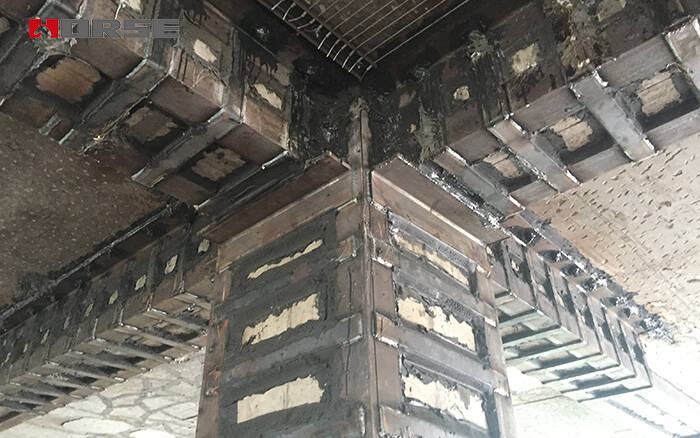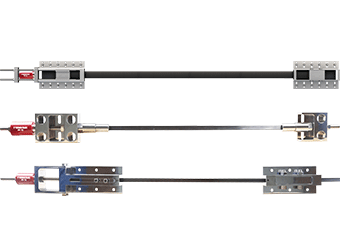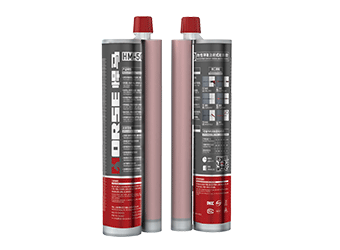Soluciones
La gama de negocios de construcción de caballos se extiende a todo el mundo y sirve a miles de clientes con productos, orientación técnica especializada en construcción, y somos testigos del reinicio de la marca china con ellos.
Concrete beams and slab members are the most widely used structural members in the current project. The flexural members of beams and slabs are strengthened by insufficient bearing capacity, including two aspects of the positive and inclined section.

Concrete beams and slab members are the most widely used structural members in the current project. The flexural members of beams and slabs are strengthened by insufficient bearing capacity, including two aspects of the positive and inclined section. The appearance of insufficient bearing capacity is too large deflection, too wide cracks, too long cracks, serious corrosion of steel bars, or crushed concrete in compression area. The reinforcement of concrete beams and slabs members is mainly to solve the problem of insufficient strength of normal section and oblique section.
Positive section strengthening
Before strengthening beams and plates, we should first distinguish the original beams is the stiffened beam ? Or a super beam? Or less beams.
When the reinforcement ratio p is less than the maximum reinforcement ratio and larger than the minimum reinforcement ratio, the beam is the suitable reinforcement beam.
If the beam is less reinforced beams, the added reinforcement steel method or similar reinforcement method may be adopted, such as bonding carbon fiber reinfroced polymer(FRP) composite materials in the tensile area and sticking steel plates in the tensile area.
If it is a super beam, the section of the original component is insufficient and it does not play a role in the drawing area. Therefore, it is necessary to adopt the reinforcement method of enlarging the section or the reinforcement method of the fulcrum, but not the externally strengthening method.
If it is a reinforced beam, the choice of reinforcement method is large, but when the reinforcement steel method is used in the drawing area, and choosen externally bonded methods, the beam don't change to a super beam.

Inclined section strengthening
When the number of the stirrup of the original beam is more, or the section size of the beam does not conform to the condition: V≤0.25fcbho, the increase of the abdominal tendon can not give full play to the effect. In other words, the stress of the additional stirrup can not reach the yield strength when the beam scissors are broken. At this time, the reinforcement section method can only be adopted to reinforce the reinforcement.(for thin-walled beams and other diagonal cracks to carry out larger components, beam section size should be strictly controlled, that is, requirements:V≤0.25fcbho).
When the original beam is less stirrups and less than the minimum reinforcement ratio, once the beam appears diagonal cracks, the hoop will yield immediately and there will be a diagonal failure. For such members, hoop reinforcement should be adopted, such as increasing stirrup, sticking steel plate hoop and bonding carbon fiber composite wrap hoop.
When the stirrup rate is between the upper and lower limits and more for lower limit, it should be strengthened by the method of adding the reinforced abdominal tendons. When the ratio of the stirrup is above the upper limit, the reinforcement method should be increased mainly with the addition of a certain amount of stirrup.
According to the above theory, the externally bonded reinforcement method can not improve the bearing capacity of the component without limit. Because the external bonding reinforcement method is carried out on the basis of the original components, the original structure's section size, reinforcement and concrete strength grade limit the degree of play.

The failure modes of reinforced concrete columns can be divided into two categories: compression failure (including axial compression columns and small eccentric compression columns) and tensile failure (large eccentric compression columns). Except for the obvious appearance of the columns with large eccentricity, the failure signs of the axially loaded columns and the small eccentrically loaded columns are not obvious. They all belong to brittle failure. In the actual project, if the longitudinal crack or the protective layer of the column is found to be broken down on the compression side of the column, it is indicated that the column is near the damage, the temporary support should be set up immediately, and the strengthening measures should be taken as soon as possible.
When strengthening, the stress characteristics of reinforced concrete columns should first be identified. If the large eccentricity is compressed, it is more effective to reinforce the tensile side of the column. If small eccentricity is compressed, the larger side of the column should be reinforced.
If the bearing capacity of the column must be increased, the length and fineness of the column must be reduced and the stiffness of the column should be increased. At this time, the enlargement of the section method should be adopted, because other reinforcement methods can not achieve the purpose of reducing the length and fineness ratio, improving the stiffness, or the effect is not obvious.
If the column bearing capacity is increased and the section size of the member can not be increased much, the method of outsourcing steel reinforcement can be adopted. After strengthening, the concrete column not only improves the bearing capacity, but also increases the ductility of the column core concrete due to the confinement of the steel hoop and the stiffen plate.
Only when partial reinforcement is needed, the replacement concrete reinforcement method can be used.
Puede encontrar cualquier cosa que necesite, confíe en probar estos productos y encontrará la gran diferencia después de eso.

Tejido de fibra de carbono unidireccional de alta resistencia para refuerzo de compuesto de polímero reforzado con fibra (FRP).

Placa / laminado / banda de polímero pretensado reforzado con fibra de carbono (CFRP) para la losa, refuerzo del haz

Resina de anclaje epoxi, paquete de cartucho doble. Se inyecta en los orificios con la pistola dispensadora para plantar barras.